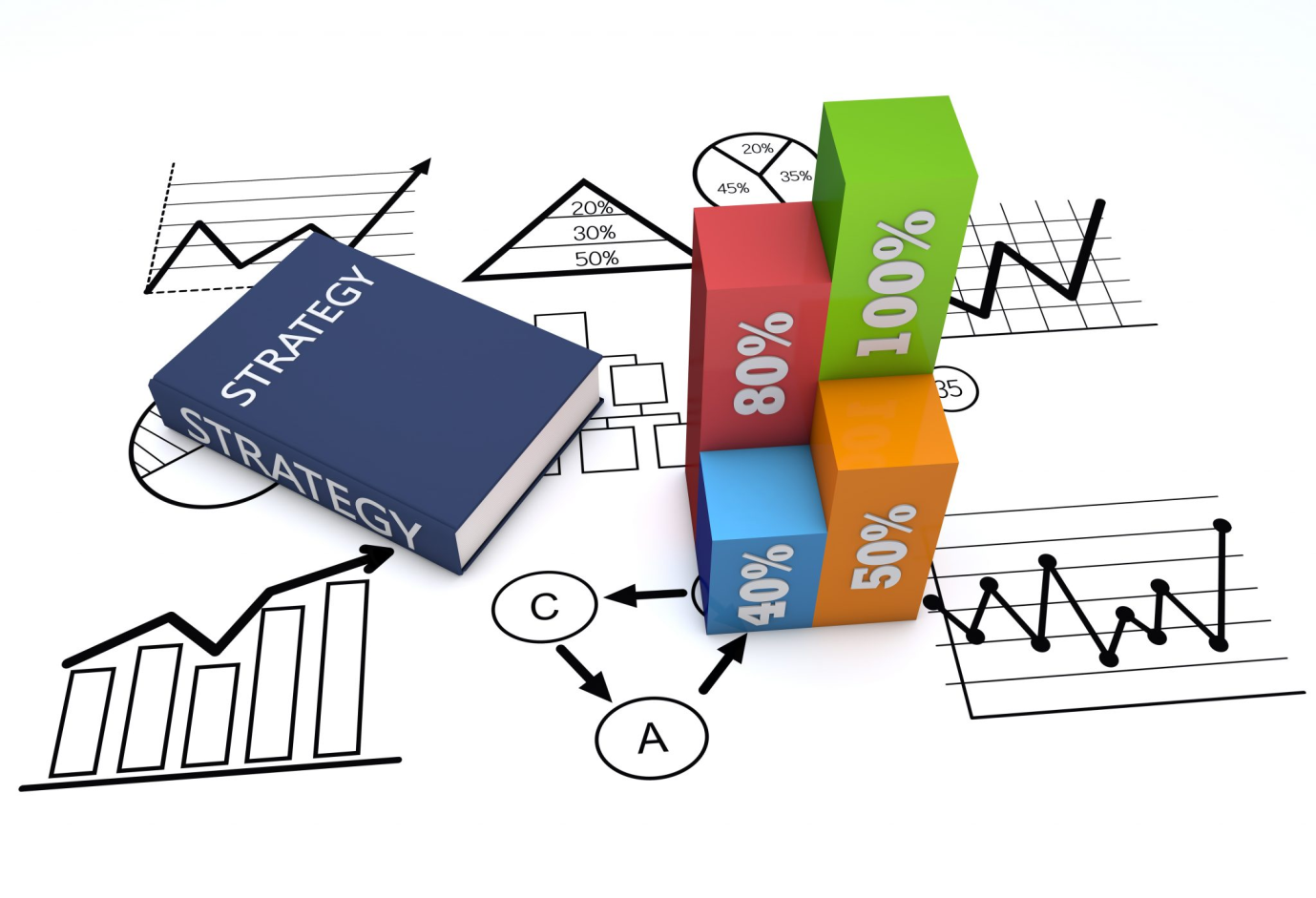How to define the product price to cover all the expenses and get high profits? That is the first question before you start the commerce. The skills of a marketer to evaluate how customers perceive the brand, scientific approach, and simply intuition will be helpful here. And the proper pricing strategy chosen by you will combine all of these factors.
The choice of a strategy affects the markup as well as the retail price greatly. These are the main formulas to calculate the retail price, markup, and margin.
A formula to calculate the retail price:
Retail price = [(product cost) / (100 — margin,%)] х 100
A formula to calculate the markup:
Markup = [(retail price х margin) / cost of the product] х 100
Formulas to calculate the margin:
Margin = markup / (100% + markup)
To make sure everything is clear in the formulas, let us give definitions to the terms that appear here.
Cost price is the sum of all manufacturing expenses for one piece of goods. This includes materials and raw materials, packaging, shipping costs, wage costs, and depreciation expenses.
Price is the cost price including advertising, taxes, and investments into enterprise development.
Markup is the difference between the retail price and cost price (or premium for procurement price).
Here is an example of how to calculate the retail price and markup.
We need to calculate the retail price for a product that costs $15, and the margin is 45%.
Retail price = [(15) ÷ (100 — 45)] х 100 = [(15 ÷ 55)] х 100 = 27 $
Markup = [(27 х 0,45) / 15] х 100 = 81%
So, the choice of a pricing strategy will be based on one of the following tactics of reaching profitability:
● low volumes of sales at high prices;
● high volumes of sales at low prices;
The sales volumes in these situations will be different but the difference in earnings may change after the period of customer adaptation to the brand is over.
10 Various Pricing Strategies Most Frequently Used by Retailers

Retail networks rarely stick to one and only scheme in pricing. In general, ten strategies of pricing are distinguished that are actively used by modern online stores. Let us consider each one of them separately.
1. Manufacturer’s suggested retail price (MSRP)
It is quite often that a manufacturer takes part in forming an adequate market price. That is why they may offer their recommendations at an early stage that are based on specific factors. First of all, this is about the necessity of standardization of prices across regions and is connected to forming a general price in the environment of retailers. What complicates the process of bringing the pricing about to a single system is the uniqueness of items. However, mass consumption goods usually have identical prices, with only some minor deviations.
Disadvantage. Only one strategy is accepted, which might be considered as far from advantageous one in the competitive environment of retailers.
Advantage. The pricing question is solved and is beyond question and discussion, which allows concentrating on more important tasks within the company.
2. Pricing strategy ‘double cost’
When defining the price, the majority of sellers stick to the principle of doubling the cost price. Thus, they get a markup of 50% respectively. Depending on a strategy, the markup may alter both to a greater or lesser degree. Doubling is the simplest way of forming the price.
Disadvantage. The strategy is not always appropriate if the product is a unique one; in this scenario, a seller may set a higher markup.
Advantage. Works well for the rest of the product types. The efficiency of the strategy work has been tested in practice. Straightforward calculations.
3. Setting differential prices
This strategy is often used by grocery chains, which is connected to the peculiarity of forming prices. Besides, it is recommended to implement this strategy of differential prices on clothes retail market as well. It will also be beneficial for online stores specializing in selling software or electronics.
The feature of the differential price strategy is that the products are sold bundled, i.e. in a set with other products. Using this approach for pricing, the retailer creates extra value for the goods that he sells.
Advantage. Contributes to the increase of sale volume of different goods.
Disadvantage. The product out of the kit may be considered money-losing because its cost cannot be reduced as this step may negatively affect the value of the kit itself.
4. ‘Anchor’ pricing strategy
Anchor #1. The strategy is achieved by means of cognitive distortion of the cost and anchoring effect. A seller sees the price Before and After the discount.
Marketing research proved that the initial price acts as an anchor, sort of a guide, thanks to which we form our opinion about the price.
For this experiment, students were asked to tell the numbers of their social security number, after that they needed to tell the cost of the goods that wasn’t familiar to them:
● computer equipment;
● wine;
● chocolate.
As a result, students having bigger social security number tended to tell the price for the products about 100% higher than their colleagues with lower SSN numbers.
Anchor #2. There is also a method of placing expensive goods next to cheaper ones. This strategy is used, particularly, by fashion designer Ralph Lauren. T-shirts for $98 are placed next to bags for $16999 in his stores. In this case, cheaper goods subconsciously seem to have low prices although it is not like that factually.
Disadvantage: Initial (neighboring) price should not be too high in order not to lose customers’ trust.
Advantage: a high chance of selling the product if the initial (neighboring) price is significantly higher.
5. Leader pricing strategy

The strategy works well with a system of product recommendations. The idea is that a customer, when buying a product at an extremely low price, also buys some extra products. To implement this strategy, retailers sell some goods at a loss but earn money due to markups on other products. To maintain the lowest prices, constant competitor price monitoring is required.
Disadvantage: This strategy must not be used too often, since customers may expect reduced prices not buying goods at a full price.
Advantage: it helps to increase the turnover and the sum of the average check in general. Works nicely without extra purchases.
6. Psychological perception
In order to minimize the customer’s feeling of loss, sellers use ‘psychological’ prices. Marketing research has proven the positive perception of the prices that end on an uneven number, for example, 9. It is amazing but it is a fact. When customers buy at a price of 9,99 instead of 10, they are sure in the economy and benefit from this purchase.
The University of Chicago and Massachusetts Institute of Technology held an experiment in which they offered customers to purchase women’s clothes of identical quality, fit, and color for 34, 44, and 39 dollars. The paradox of customers’ behavior was that most of the goods that had been sold had a price of 39 dollars.
Disadvantage: The strategy cannot be applied to luxury items and unique goods, since it may negate the brand perception. Advantage: Impulsive purchases.
7. Pricing strategy «lower than at competitors»
This strategy is good for the market with high competition. To win competitors, retailers use dumping on purpose. Sellers follow special rules for the correct calculation of reduced prices. The prices are formed not only after the products’ revaluation but as a result of regular monitoring of competitors’ prices. The competition of online stores has reached its peak that is why a lot of them resort to price reductions.
Disadvantage: The margin is reduced significantly which is why this strategy will not work for small merchants.
Advantage: The increase in volumes of sales. The strategy promotes bringing new goods to the market. The efficiency increases if you can get the goods from a supplier at a low procurement price.
8. Pricing strategy «higher than at competitors»
To position the product as more valuable, retailers maintain their prices at a much higher level comparing to the competitors.
Richard Thaler confirmed this theory. In his research, he noted out that people on the beach were more eager to buy beer at the hotel at a more expensive price, than in an ordinary grocery store.
Disadvantage: The strategy is difficult to realize if potential customers are sensitive to the price.Advantage: A special ‘wow’ effect is noticeable. Buyers start believing that higher price stands for more quality product.
9. Sales and discounts

Discounts are quite popular and so-called Black Friday and seasonal sales that customers expect throughout the world just prove that. Even a whole class of people who hunt for coupons to purchase more goods at low prices has formed. This is a good way to attract new customers, get rid of outdated goods, and increase attendance in general.
Disadvantage: If you do not want your store to be considered a budget store, do not use discount pricing very often. It may play a bad role during the next strategies.
Advantage: Perfect for attracting customers and realization of goods off-season.
10. Dynamic pricing
The strategy implies quick price changes as a response to the changes in the situation on the market. Dynamic pricing is actively used during train and airplane ticket sales, or when booking hotels. Also, large manufacturers and retailers (Amazon, Walmart, Best Buy, and others) use this strategy as well. In recent years, large and medium-size online stores have also started implementing the strategy.
Dynamic pricing strategy in online stores allows to track prices of other sellers and promptly change their own prices as a response to changes in supply and demand.
Disadvantage. Expenses on service of competitor price monitoring.
Advantage. Fast recoupment of the service and an increase in profitability of the online shop.
Important! Choose a strategy individually according to your product. Change the strategies and keep up with the time. Remember that the price is a driving mechanism of any business management. Feel the market and listen to modern tendencies.





